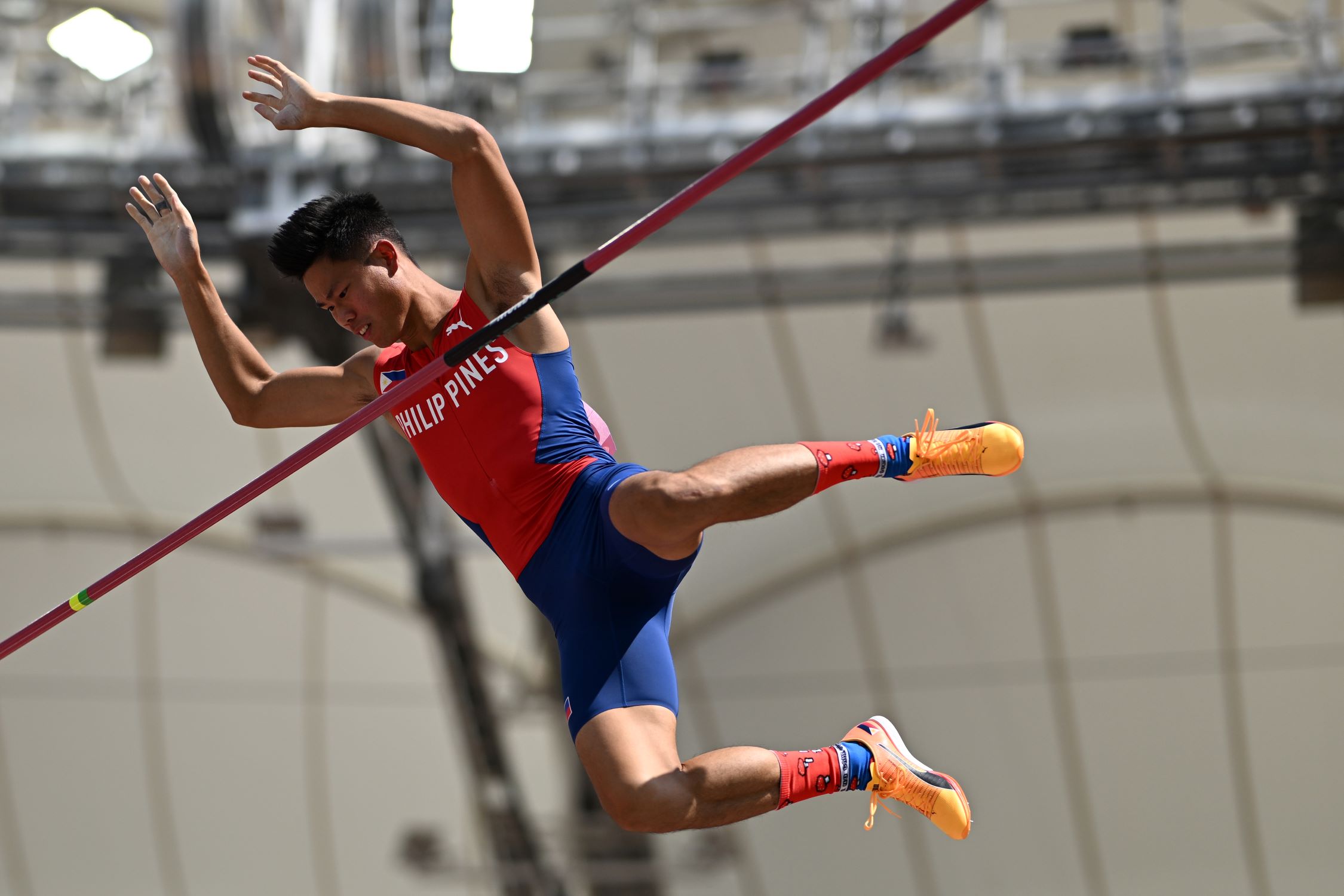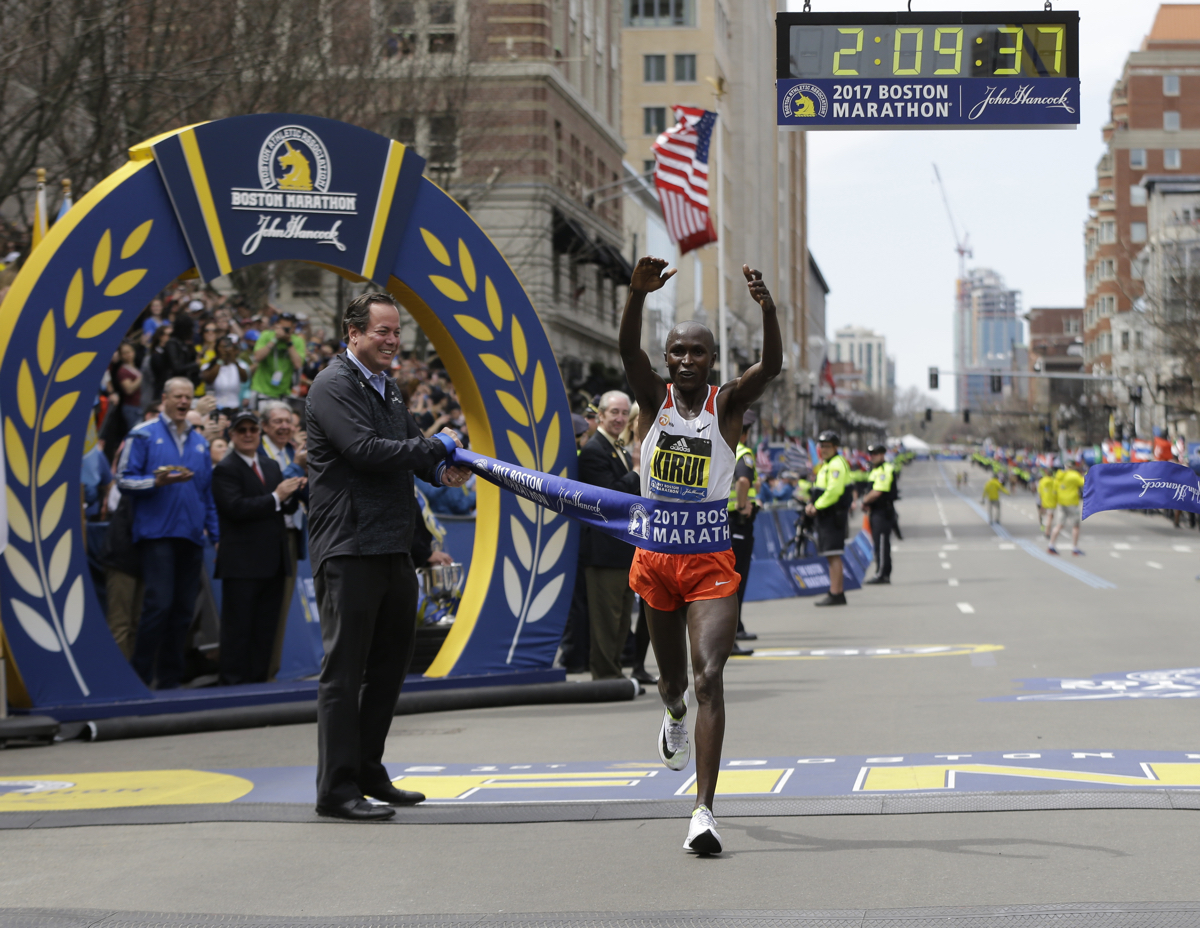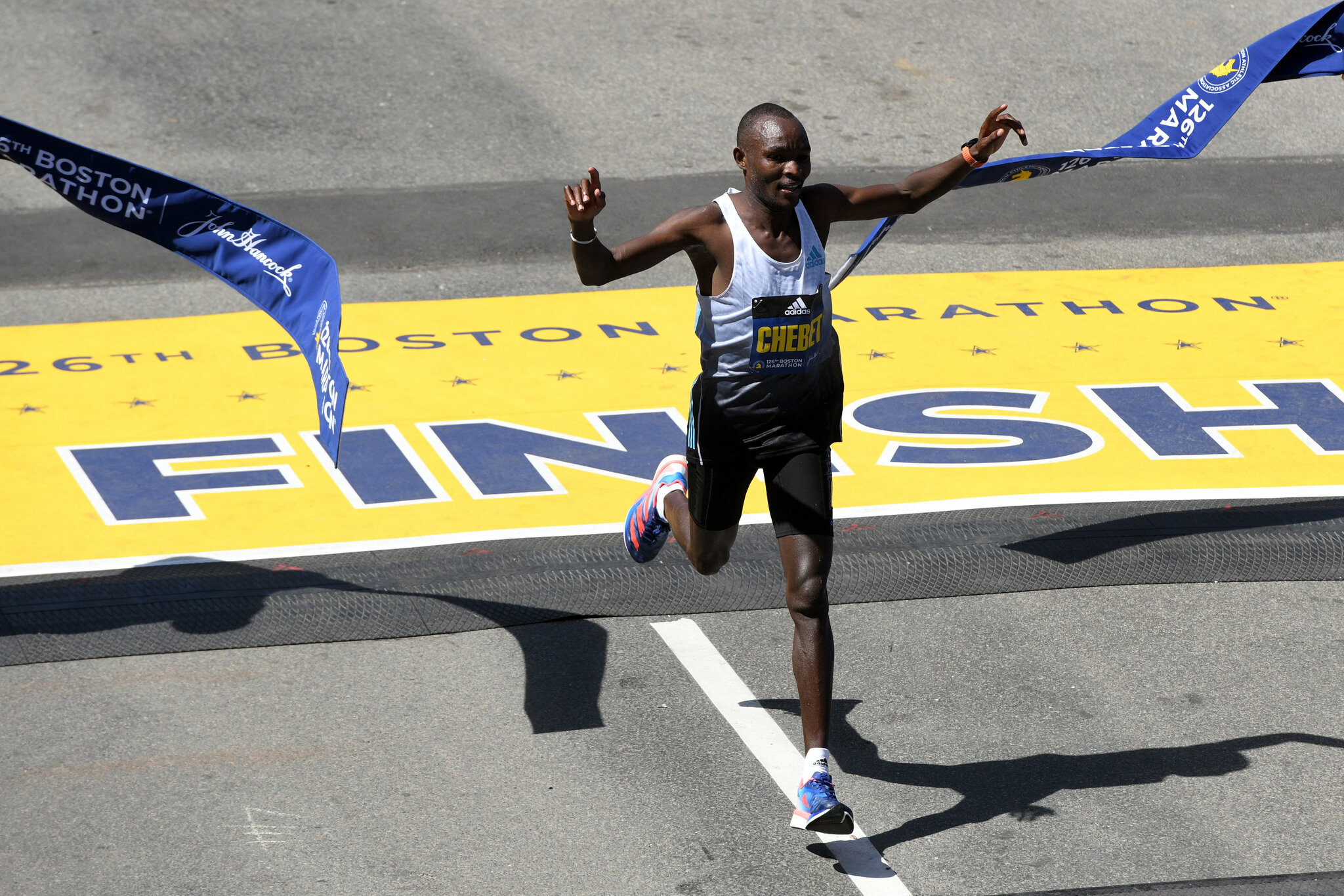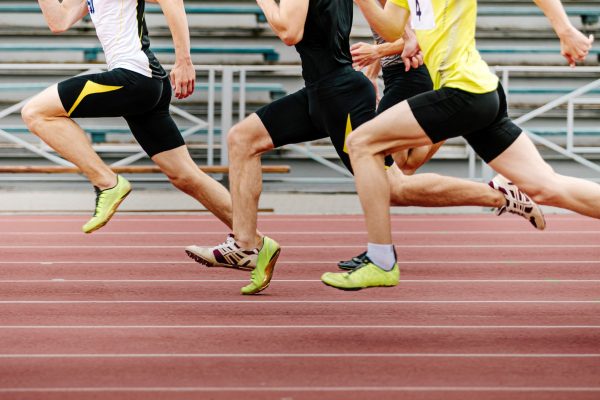

Featured
When Did Jogging Start
Modified: January 2, 2024
Discover the origins of jogging in our featured article on When Did Jogging Start. Explore the history and evolution of this popular fitness activity.
Introduction
Running has been a part of human history for centuries. From ancient civilizations to modern times, the act of propelling oneself forward on foot has served various purposes such as hunting, transportation, and sport. However, the concept of jogging as a recreational activity is a relatively recent phenomenon.
In this article, we will explore the fascinating origins of jogging, its evolution as a popular recreational activity, and its significance in the modern world. We will also discuss the benefits of jogging and the current trends surrounding this beloved form of exercise.
While running has always been a natural human movement, it wasn’t until the 20th century that jogging began to gain recognition as a distinct activity. Prior to that, running was primarily associated with competitive sports or essential daily activities.
The emergence of jogging as a recreational activity can be attributed to several factors. In the 1960s and 1970s, societal changes, technological advancements, and influential figures played a significant role in popularizing jogging as a means of exercise and relaxation. The jogging craze that swept across the United States during this time had a profound impact on the global fitness industry.
Today, jogging is more than just a form of exercise. It has become a lifestyle choice for many individuals seeking to improve their physical and mental well-being. From professional athletes to weekend warriors, people of all ages and backgrounds embrace jogging as a way to stay fit, relieve stress, and connect with nature.
In the following sections, we will delve deeper into the early origins of running, the emergence of jogging as a recreational activity, the jogging boom in the 1960s-1970s, and the current trends and benefits associated with this popular exercise.
Early Origins of Running
The act of running can be traced back to our earliest ancestors. Homo sapiens, Homo neanderthalensis, and even earlier hominid species relied on running for survival. Running was essential for hunting, escaping predators, and covering long distances.
Anthropological evidence suggests that our ancestors developed the ability to run long distances as early as two million years ago. The anatomical features of our bodies, such as long legs and short toes, are adaptations that allowed for efficient running.
Running played a pivotal role in the development of early civilizations. In ancient Greece, running was not only a sport but also an integral part of military training. The first recorded running competition, known as the stadion race, took place in Athens during the ancient Olympic Games in 776 BCE.
Around the same time, running was also prevalent in various cultures across the globe. Native American tribes engaged in running games as a way to demonstrate strength and endurance. Indigenous cultures in Africa utilized running as a means of communication, allowing messengers to relay important information over long distances.
Throughout history, different civilizations incorporated running into their cultures and traditions. The Romans developed elaborate systems of roads, enabling the efficient movement of goods and troops. Runners called “couriers” were essential for delivering messages across vast distances.
In many indigenous cultures, running held spiritual and ceremonial significance. Ritualistic running events were performed to honor deities, celebrate harvests, or mark important milestones. These events showcased the physical capabilities and prowess of individuals within the community.
While running remained an integral part of human life, it wasn’t until the 20th century that jogging began to emerge as a separate activity. The shift towards recreational jogging came about as a result of societal changes, technological advancements, and the influence of key individuals.
Next, we will explore the emergence of jogging as a recreational activity and the factors that contributed to its popularity.
Emergence of Jogging as a Recreational Activity
The concept of jogging as a recreational activity began to gain traction in the mid-20th century. Prior to that, running was primarily associated with competitive sports or utilitarian purposes. However, several factors contributed to the emergence of jogging as a popular form of exercise and leisure.
In the 1960s, societal shifts towards health and wellness created an environment ripe for the popularization of jogging. As concerns about sedentary lifestyles and the impact of modern conveniences on physical fitness grew, individuals started seeking ways to incorporate exercise into their daily routines.
Technological advancements in the footwear industry also played a crucial role in the rise of jogging. The development of more comfortable and supportive running shoes made it easier for individuals to engage in this activity. Brands like Nike and Adidas introduced innovative designs specifically tailored for jogging, which further fueled its popularity.
One of the pivotal moments in the history of jogging was the publication of the book “Jogging” by Bill Bowerman and W.E. Harris in 1967. Bowerman, the co-founder of Nike, and Harris, a cardiologist, provided practical advice and guidelines for recreational jogging. The book emphasized the health benefits of jogging and presented it as a simple and accessible form of exercise.
Another influential figure in the rise of jogging was Dr. Kenneth H. Cooper, an American physician who popularized the concept of aerobic exercise. In his groundbreaking book “Aerobics” published in 1968, Dr. Cooper introduced the concept of jogging as a means to improve cardiovascular health and endurance.
The media also played a significant role in promoting jogging to the masses. Magazines, newspapers, and television programs featured articles and segments highlighting the benefits of jogging. This widespread coverage helped to further popularize the activity.
Jogging became a global phenomenon in the 1970s, with the running boom reaching its peak. The first official road race, the New York City Marathon, took place in 1970 and attracted thousands of participants. The event marked a turning point, showcasing jogging as a legitimate sport and inspiring countless individuals to take up running.
By the end of the 1970s, jogging had become ingrained in the public consciousness as a popular form of exercise. Parks and recreational areas began to create designated running paths, and jogging clubs and communities started to form. People from all walks of life embraced jogging as a way to stay fit, lose weight, and enjoy the great outdoors.
In the next section, we will explore the continued popularity of jogging in the modern era, its numerous benefits, and the current trends surrounding this beloved recreational activity.
Jogging’s Popularity Boom in the 1960s-1970s
The 1960s and 1970s marked a significant turning point in the history of jogging. During this time, jogging experienced a popularity boom that transformed it from a niche activity to a widespread phenomenon.
One of the main catalysts for the jogging craze was an increased focus on health and fitness. The post-World War II era saw advancements in technology and changes in lifestyle that led to more sedentary behaviors. Concerns about the negative impact of a sedentary lifestyle on physical health began to emerge, prompting individuals to seek ways to incorporate exercise into their daily routines.
Jogging gained traction as an accessible form of exercise that could be easily integrated into people’s lives. Unlike competitive sports that require specialized equipment and facilities, jogging was affordable and convenient. All that was needed was a pair of running shoes and a safe outdoor space.
The publication of Bill Bowerman and W.E. Harris’ book “Jogging” in 1967 further propelled the popularity of jogging. The book provided practical tips and guidance for individuals looking to start jogging. It emphasized the numerous health benefits of the activity, including improved cardiovascular health, weight loss, and stress reduction.
Another influential figure during this time was Dr. Kenneth H. Cooper, whose book “Aerobics” introduced the concept of jogging as a means to improve cardiovascular endurance. Dr. Cooper’s research and advocacy for aerobic exercise resonated with people, leading to a surge in interest in jogging.
The media played a critical role in promoting and popularizing jogging. Articles in popular magazines, such as Sports Illustrated and Life, featured stories about jogging and its benefits. Television segments showcased individuals of all ages and backgrounds participating in jogging activities. This exposure helped to normalize jogging and inspire countless individuals to give it a try.
In addition to the media coverage, the advent of organized jogging events and races contributed to the surge in popularity. The New York City Marathon, first held in 1970, marked the beginning of a new era for jogging as a competitive sport. The marathon attracted thousands of participants and spectators, capturing the attention and imagination of the public.
The social aspect of jogging also played a significant role in its popularity boom. Jogging clubs and communities began to form, providing individuals with the opportunity to connect with like-minded individuals and share their love for the activity. This sense of community fostered a supportive and motivating environment for joggers.
By the end of the 1970s, jogging had become a mainstream activity embraced by people from all walks of life. It had transcended its origins as a recreational exercise and evolved into a cultural phenomenon. The impact of this jogging boom in the 1960s-1970s can still be felt today, as running continues to be a popular form of exercise and a symbol of health and fitness.
In the next section, we will explore jogging in the modern era, discussing its benefits and the current trends surrounding this beloved activity.
Jogging Today: Benefits and Trends
Jogging remains a popular form of exercise in the modern era, valued for its numerous physical and mental health benefits. Here, we will explore some of the key advantages of jogging and discuss the current trends surrounding this beloved activity.
One of the primary benefits of jogging is its impact on cardiovascular health. Regular jogging helps to strengthen the heart, improve blood circulation, and increase lung capacity. It can lower the risk of heart disease, reduce blood pressure, and improve overall cardiovascular fitness.
Along with its physical benefits, jogging is also known for its positive effects on mental well-being. Engaging in regular jogging can help reduce stress, alleviate symptoms of anxiety and depression, and enhance mood. The release of endorphins during exercise contributes to a sense of happiness and well-being.
Another advantage of jogging is its accessibility. Unlike many other forms of exercise, jogging requires minimal equipment and can be done anywhere, at any time. All that is needed is a well-fitting pair of running shoes and a safe space to run. This accessibility makes jogging appealing to people of all ages and fitness levels.
In the modern era, jogging has also seen an increase in technological advancements and trends. The emergence of fitness tracking devices, such as smartwatches and fitness apps, has revolutionized the way people approach jogging. These devices can track distance, pace, and heart rate, providing individuals with real-time feedback on their performance and progress.
Virtual races have also gained popularity, especially in recent times when in-person events have been limited. Runners can participate in virtual races from anywhere in the world, competing against others by recording their runs and submitting their results online. This trend has allowed for increased participation and a sense of community, even when physical gatherings are not possible.
Another trend in jogging is the rise of trail running. Many people are now seeking out off-road paths and natural environments to enjoy their jogging experience. Trail running offers a unique and immersive experience, connecting individuals with nature and providing a more challenging terrain that engages different muscle groups.
Additionally, social media has played a significant role in promoting jogging as a lifestyle choice. Influencers and fitness enthusiasts share their running journeys, tips, and experiences on platforms like Instagram and YouTube. This virtual community has created a sense of inspiration and support, motivating others to take up jogging or improve their running skills.
Jogging in the modern era continues to be a popular and accessible form of exercise, offering a multitude of physical and mental health benefits. From improved cardiovascular fitness to reduced stress levels, jogging has proven itself as a beloved activity for millions around the world. As trends and technological advancements continue to shape the jogging landscape, the future of this timeless exercise looks promising.
Conclusion
Jogging has come a long way since its early origins as a survival technique and a competitive sport. Over time, it has evolved into a popular recreational activity that offers numerous physical and mental health benefits.
The emergence of jogging as a recreational activity in the 20th century was fueled by societal changes, technological advancements, and the influence of key individuals. It quickly gained popularity as an affordable and accessible form of exercise, capturing the attention of individuals across different age groups and backgrounds.
The jogging boom in the 1960s-1970s, marked by the publication of influential books, media coverage, organized races, and the formation of jogging communities, propelled jogging into the mainstream. It became more than just a form of exercise; it became a symbol of health, well-being, and a sense of community.
Jogging continues to thrive in the modern era, with people embracing its physical and mental benefits. It offers individuals the opportunity to improve cardiovascular health, relieve stress, and connect with nature. The accessibility of jogging, coupled with technological advancements and current trends like virtual races and trail running, has expanded its appeal and reach.
As we look to the future, jogging is expected to remain a popular form of exercise. Its simplicity, affordability, and versatility make it a time-tested activity that can be enjoyed by individuals of all fitness levels. Whether one chooses to jog alone, join a running club, or participate in virtual races, jogging provides an avenue for personal growth, physical fitness, and a sense of belonging to a wider community.
So, put on those running shoes, find a scenic path, and experience the joy and benefits of jogging. Embrace the legacy of this timeless activity while forging your own path toward a healthier and happier life.







